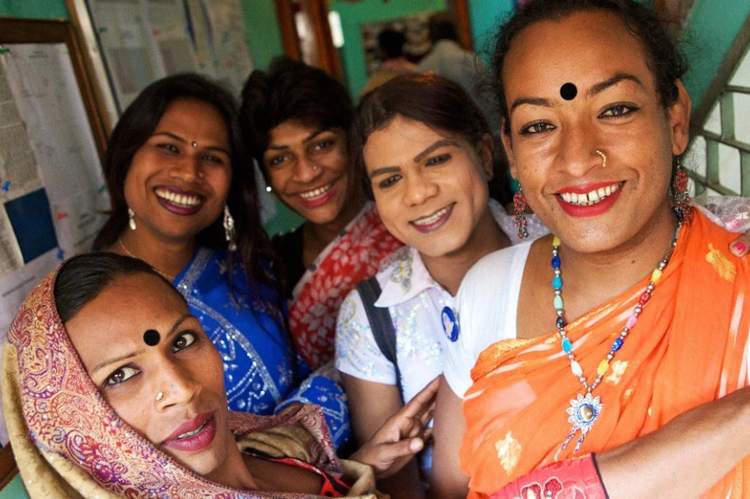
Protecting transgender rights: At birth, humans inherit a body, a mind, and a spirit meant to exist in harmony. For many transgender people, this balance is broken — their body contradicts the identity that their mind and spirit affirm. This profound mismatch often leads to severe emotional conflict, sometimes so intense that it overrides even the instinct for survival. According to the National Library of Medicine, nearly 29% of transgender individuals attempt self-harm at some point in their lives — a staggering figure that reveals the human cost of exclusion.
India’s engagement with gender diversity is ancient. Transgender people — known through history as hijras, kinner, aravani, and jogta — appear in the Ramayana, Mahabharata and Jain texts as respected members of society. Yet this recognition eroded under British colonial rule, which criminalised transgender identities through laws such as the Criminal Tribes Act and Section 377 of the Indian Penal Code (1860). The colonial state converted social diversity into criminal deviance, setting in motion a long legacy of marginalisation.
READ I Private sector slowdown signals a gear shift, not crisis
Recognition on paper, discrimination in life
It was only in 2011 that transgender persons were officially counted in India’s Census as the “other” gender — about 4.88 lakh people were identified. Despite this visibility, everyday discrimination persists: bullying in schools, exclusion from jobs, and violence at home or in public spaces.
Even today, state-sponsored discrimination continues in parts of the world through criminal laws that punish people for expressing their gender identity. International bodies such as the UN Human Rights Council have repeatedly urged governments to repeal such laws, but progress is uneven.

Former UN Secretary-General Ban Ki-moon once declared, “Culture, tradition and religion can never justify the denial of basic rights.” His words echo a truth that societies like India are still grappling with: equality cannot be selective.
Legislative milestones towards transgender rights
India has begun to move towards legal protection of transgender rights and inclusion. The Transgender Persons (Protection of Rights) Act, 2019 marked a turning point. It prohibits discrimination, mandates access to education and healthcare, and establishes a National Council for Transgender Persons to oversee implementation. The law also protects children from family abandonment and ensures access to gender-affirming healthcare.
Building on this, the ministry of social justice and empowerment launched the SMILE Scheme (Support for Marginalised Individuals for Livelihood and Enterprise) in 2022. It focuses on rehabilitation, medical care, education, and skill development for transgender persons. Under its Comprehensive Rehabilitation sub-scheme, transgender students from Class 9 to postgraduate level are eligible for scholarships, ensuring long-term social mobility.
Digital identity and local initiatives
To improve access to public services, the government launched a National Portal for Transgender Persons, enabling online applications for identity certificates and tracking of grievance redressal. This digital inclusion step reduces bureaucratic hurdles and provides a verifiable recognition mechanism that can unlock access to healthcare, jobs, and education.

At the state level, progress is uneven but notable. Madhya Pradesh’s 2020 Transgender Policy introduced district-level welfare committees. Karnataka mandated 1% job reservation for transgender persons, while Bihar and Chhattisgarh have begun recruiting them into police services. Uttar Pradesh established Garima Grah homes for elderly transgender persons and proposed the country’s first transgender university. These local innovations show how inclusive governance can start from the bottom up.
More than 70,000 transgender persons live in rural India, according to census data, with the highest numbers in Uttar Pradesh. Yet, few states have extended welfare schemes to rural areas. Without targeted interventions — from livelihood support to safe housing — rural transgender communities remain doubly marginalised by poverty and stigma. A meaningful gender equality policy must close this urban–rural gap.
Unfinished journey towards transgender rights
India’s constitutional promise under Article 21 guarantees every citizen the right to live with dignity. Yet the transgender community continues to face systemic neglect. Despite new laws and schemes, implementation lags due to bureaucratic apathy and social prejudice. Many well-intentioned programmes falter because of weak monitoring and the absence of community participation.
True inclusion requires more than legal recognition; it demands social acceptance and economic empowerment. The government must collaborate with transgender leaders, activists, and local organisations to identify gaps in welfare delivery. Setting up responsive mechanisms where individuals can report discrimination and seek redressal will make these rights real, not rhetorical.
India once celebrated gender diversity; today, it must reclaim that heritage. The measure of a nation’s progress lies not only in its economic growth but also in how it treats its most marginalised citizens. Transgender rights are human rights — and ensuring them is central to India’s democratic promise.
Vansh Mittal and Paakhi Goyal are students, and Dr Salineeta Chaudhuri Associate Professor at Christ University, Delhi-NCR Campus.
